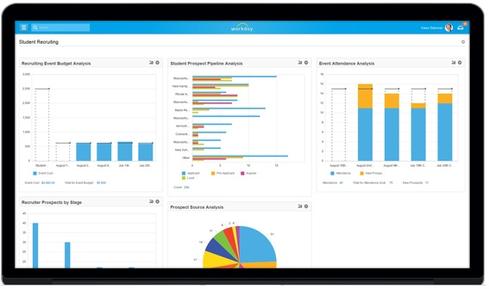Workday steps up competition against Oracle PeopleSoft with Workday Student suite. Recruiting is first of seven components.


10 New Side Projects For Larry Ellison
10 New Side Projects For Larry Ellison (Click image for larger view and slideshow.)
Workday introduced Workday Student on Thursday, delivering the first component of a cloud-based application that will eventually cover the entire lifecycle of student interactions with colleges and universities.
Workday announced its intention to build Workday Student one year ago, and it's introducing the first module, Workday Student Recruiting, more or less on the "mid-2014" schedule it promised. Still to come are components for admissions, registration, financial awards, student aid, tuition-management, and graduation, all of which will be rolled out by 2016, according to Workday.
The new cloud-based app takes on aging platforms in the EDU arena including Oracle's PeopleSoft application (co-invented by Workday chairman Dave Duffield). Workday asserts legacy systems weren't designed for the mobile, socially connected, and non-traditional part-time and increasingly online student bodies of today.
[Want more on Workday? Read Workday Q&A: COO Talks Oracle, SAP.]
Built on a backbone of existing functionality, Workday Student is described by the company as a unified administrative suite that includes HCM, financials, grants-management, and payroll functionality in a system that is entirely online and mobile enabled. All components will be tied to the budgeting, planning, HR, and analytics-enabled backbone.
Workday started with Recruiting because that's the first point of interaction with students. The system can be exposed directly to student candidates, online or through mobile apps, so they can share test scores, advanced-placement course records, financial-aid applications, and their personal goals and interests. College recruiters use the system to plan recruiting events, launch campaigns, target top candidates, and track results and return-on-investment for various campaigns and events over time.
The recruiting module is designed to work hand-in-hand with the app's coming Admissions module so institutions can plan incoming classes more reliably. "Filling an entering class is like filling an airplane; if you under-fill it's a financial burden, and if you overfill you have problems finding dorm rooms, classrooms, and faculty to teach courses," said Liz Dietz, Workday's VP, strategy and product management, in a phone interview with InformationWeek. "With Workday Student Recruiting you can assess whether students are a good fit for your institution or whether you are their 'safety' school."
Workday is developing the entire Student suite with input from more than 80 higher-ed managers and executives from a cross section of nine institutions. Selective private institutions are represented by executives from Yale and University of Rochester. Midsized private schools are represented by Barry College and Stevens Institute. Community colleges are represented by Broward County and Tallahassee community colleges. Large state schools include the University of Texas at Austin and an unnamed land-grant college. Non-traditional schools are represented by Southern New Hampshire University.
App strategists, designers, and developers meet with these executives four times per year in two-day review sessions, according to Dietz. Workday also holds frequent web conference sessions to get interactive feedback on design improvements gained through the company's iterative, agile-development approach.
Workday has laid out the components that are coming, but it's keeping Workday Student release dates close to its vest. Nonetheless, you can expect several additional components of the suite to be introduced in 2015.
You've realized the easy gains from SaaS. Now it's time to dig into PaaS, performance, and more. Get the new Your Next Cloud Move issue of InformationWeek Tech Digest today. (Free registration required.)
About the Author(s)
You May Also Like







